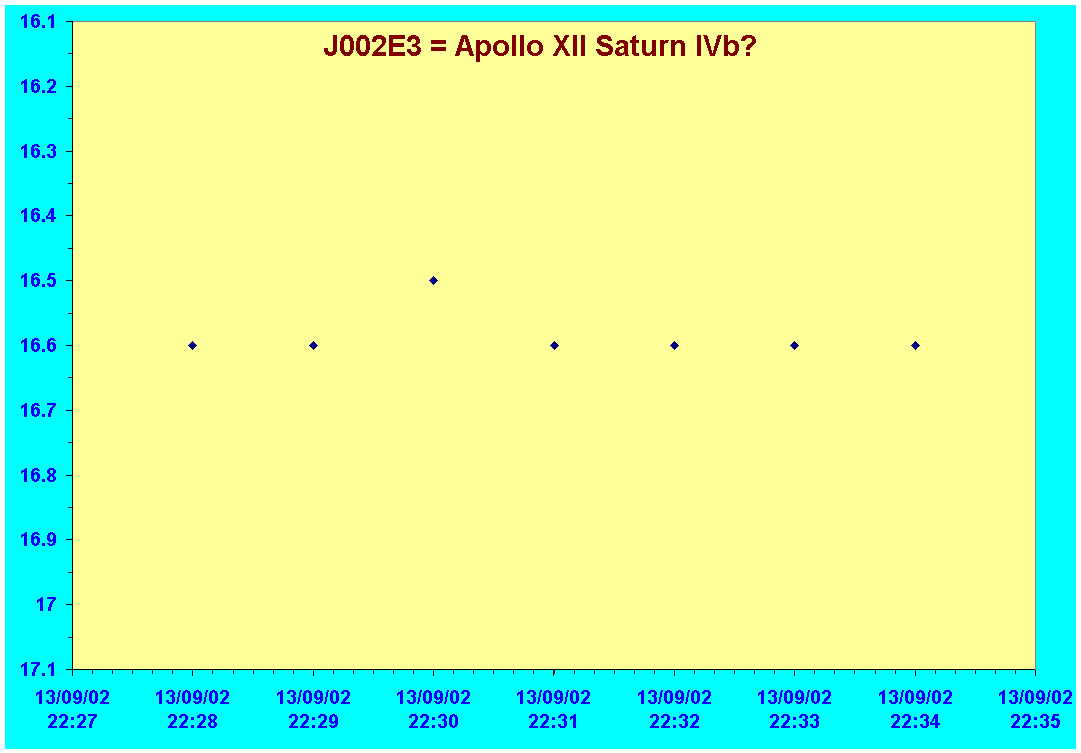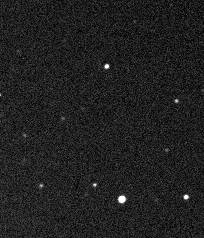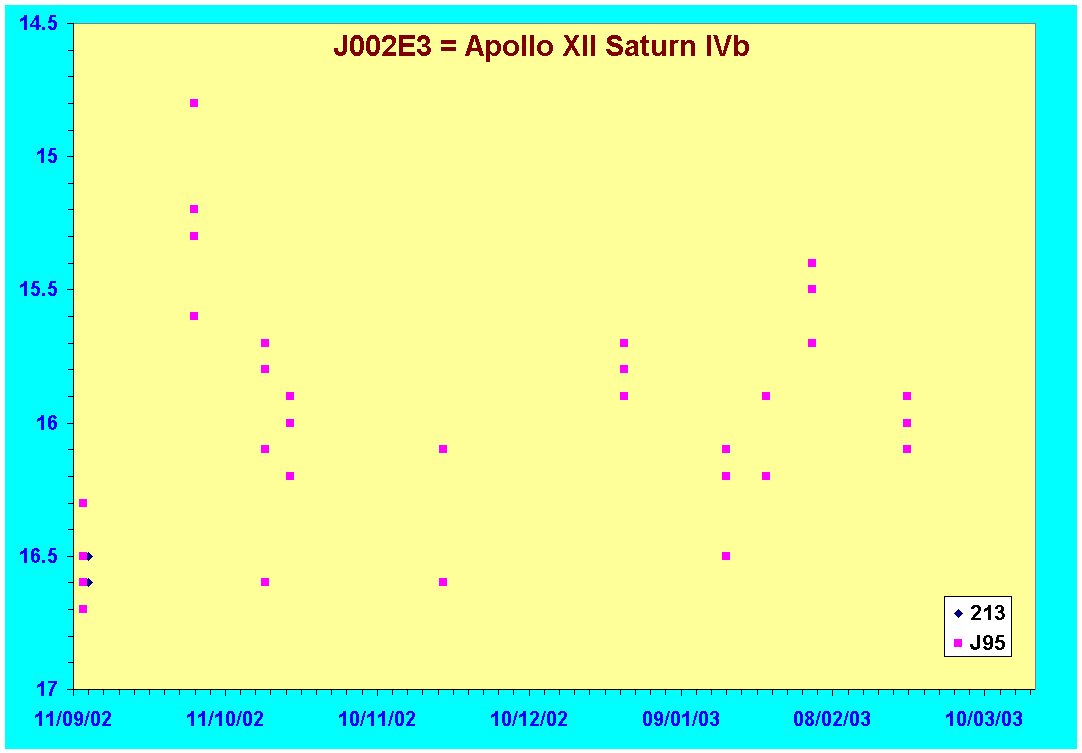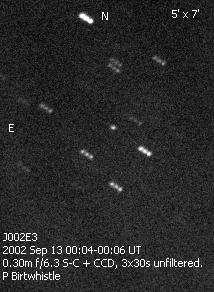J002E3 is a small and moderately faint asteroid (magnitude 16.5) that was discovered by American amateur astronomer Bill Yeung at Desert Eagle Observatory on September 3rd 2002. This one though was found to show an extremely unusual motion even by the standards of NEOs.
On investigation, it was found that the asteroid is at approximately twice the distance of the Moon and in orbit around the Earth. This led to immediate suggestions that it could be a returning space craft. As usual, suspicions were centred on the Saturn IVb third stages of the Apollo missions as these are by far the largest objects that have been launched into heliocentric orbit. Detailed orbital simulations suggest that J002E3 is the third stage of the Apollo XII mission, the last one that was not deliberately crashed into the Moon to investigate its seismic properties.
J002E3 was orbiting the Sun on the inside of the Earth's orbit until April 2002 when it passed through the L1 Earth-Sun Lagrange point and was captured into a rather distant Earth orbit. Curiously, the current orbit is similar to that of Apollo XII's 3rd stage that was in a 43 day orbit when last seen in 1969 and could easily have escaped to heliocentric orbit.
Initially it was calculated that J002E3 has a 20% chance of impacting the Moon in 2003 and a 3% chance of reentering the Earth's atmosphere before 2012, although its small size and fragile construction means that it would burn up completely in the atmosphere. New calculations later suggested though that the probability of a lunar impact was less than 1% and there was no possibility of an Earth impact. Instead, the object has now finally escaped Earth orbit in June 2003 and will be recaptured at some moment in the future in around 30-40 years from now.
Links to some reports
- The BBC's original report here
- The BBC's follow-up report describing the identification of the object as a return of the Apollo XII Saturn IVb third stage here
- NASA Science News story about the object here
- The NASA Near Earth Object Program report (liable to disappear at some point), here
- To generate an ephemeris, click here
Animation: September 13th 2002, 22:28-22:34UT
A sequence of 9 images. The asteroid is the faint, moving point in the centre.
Ramón Naves & Montse Campàs
MPC 213, OBSERVATORIO MONTCABRER CABRILS (SPAIN)

Light curve: September 13th 2002, 22:28-22:34UT
The light curve from the sequence of 9 images shown above. As we can see there is practically no variation in the data. A tumbling piece of space junk would be expected to show a light curve with rapid variations of high amplitude. The lack of these variations initially made experts think that this was a natural object.
Data from: Ramón Naves & Montse Campàs
MPC 213, OBSERVATORIO MONTCABRER CABRILS (SPAIN)
Light curve
The light curve from available data.
Data from: Ramón Naves & Montse Campàs (MPC 213), Peter Birtwhistle (MPC J95)
Image: September 13th 2002, 00:04-00:06UT
The sum of 3 images taken with a 30cm, f/6.3 Schmidt-Cassegrain + CCD. 3x30s exposure.
Peter Birtwhistle
peter@birtwhi.demon.co.uk
MPC J95, Great Shefford


